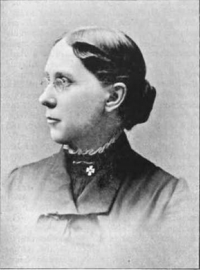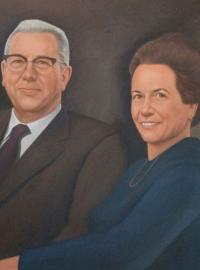Table of ContentsClose

This year is a milestone in the history of the University of Iowa Roy J. and Lucille A. Carver College of Medicine: the 150th anniversary of the first medical school class on the Iowa City campus.
Medical training through the University of Iowa can be traced to 1850, when the Iowa Legislature sanctioned the College of the Physicians and Surgeons of the Upper Mississippi—first established in Davenport before relocating to Keokuk, Iowa—as the university’s affiliated medical department.
But the fall of 1870 marked the official beginning of medical education at Iowa. The Medical Department was open to men and women, making Iowa one of the first coeducational medical schools in the nation and ostensibly the first such college west of the Mississippi River. Eight of the 37 students in the first class were women.
The Medical Department began with one building: South Hall, located next to Old Capitol on what is now the University of Iowa Pentacrest. The curriculum covered anatomy, chemistry, materia medica, medical jurisprudence, obstetrics and gynecology, physiology, surgery, and the theory and practice of medicine.
Today, the Carver College of Medicine remains a cornerstone of the university’s health sciences campus. And as it has for the past century and a half, the Carver College of Medicine stands ready—through its mission of biomedical research, medical education, and patient care and service—to serve Iowa, and the world, well into the future.
1870

First medical class; one of the nation's first coeducational medical schools
The Medical Department holds its first classes, with 37 total students and eight women in the first class of students—making Iowa one of the first coeducational medical schools in the nation.
1876

McCowen is one of the first women to graduate from the college
Jennie McCowen, MD, graduates with honor and begins as assistant physician on the staff of the facility known at the time as the State Hospital for the Insane in Mount Pleasant, Iowa. McCowen would later serve as a private practitioner in Davenport, Iowa and establish the Iowa State Society of Medical Women. Today, one of the four student learning communities in the Carver College of Medicine is named in her honor.
1950

Ponseti establishes clubfoot clinic
Ignacio Ponseti, MD, is appointed to direct the clubfoot clinic, where he develops the nonsurgical technique that would become the gold standard for treatment known as the Ponseti Method.
2002

Carver College of Medicine era begins
In recognition of $90 million in total support—including $63 million in new gift commitments in 2002— from the late Roy J. Carver; his widow, Lucille A. Carver; and the Roy J. Carver Charitable Trust of Muscatine, Iowa, the Board of Regents approved the naming of the medical school as the Roy J. and Lucille A. Carver College of Medicine. Carver (1909-1981) was an industrialist, sports enthusiast, and philanthropist whose generosity made an indelible mark on colleges, programs, and services across the University of Iowa.
Looking Forward
Carver College of Medicine students consider what medicine might look like in the next 150 years.






